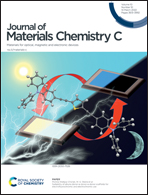Recent advances in Pr3+-activated persistent phosphors
Abstract
Lanthanide-doped phosphors with persistent luminescence have attracted much interest owing to their unique “self-luminescing” feature and broad potential applications. Among all lanthanide ions, Pr3+ exhibits versatile persistent luminescence in a wide spectral range (from ultraviolet, visible to infrared) due to its manipulable 4f5d → 4f2 inter-configurational and 4f2 → 4f2 intra-configurational emission transitions in appropriately designed host matrices. However, no effort has been made to provide a comprehensive overview of Pr3+-activated persistent phosphors so far. Here, to provide some guidelines for the future development of persistent phosphors and to expand their potential applications, we have concisely summarized Pr3+-activated visible (especially red), infrared, and UV persistent luminescence in different types of host matrices. Based on the investigated Pr3+-activated persistent phosphors, plausible mechanisms of Pr3+-activated red/visible, infrared, and UV persistent luminescence were briefly discussed. We have further discussed the potential of Pr3+-activated red and infrared persistent phosphors as potential luminescent probes in night-vision surveillance and bio-imaging. The more recently reported UVC and dual UVC-UVB persistent phosphors activated by Pr3+ have boosted exciting applications beyond the capabilities of red/infrared persistent phosphors, including the distant tagging and tracking of Pr3+-activated persistent phosphor-labelled targets in bright environments. Finally, a few perspectives for Pr3+-activated persistent phosphors are highlighted. The upconverted persistent luminescence of Pr3+ is one future path towards more application possibilities. It is expected that this review will further motivate scientists to explore new desirable persistent phosphors and their potential applications along with understanding their composition–structure–property relationship.



 Please wait while we load your content...
Please wait while we load your content...